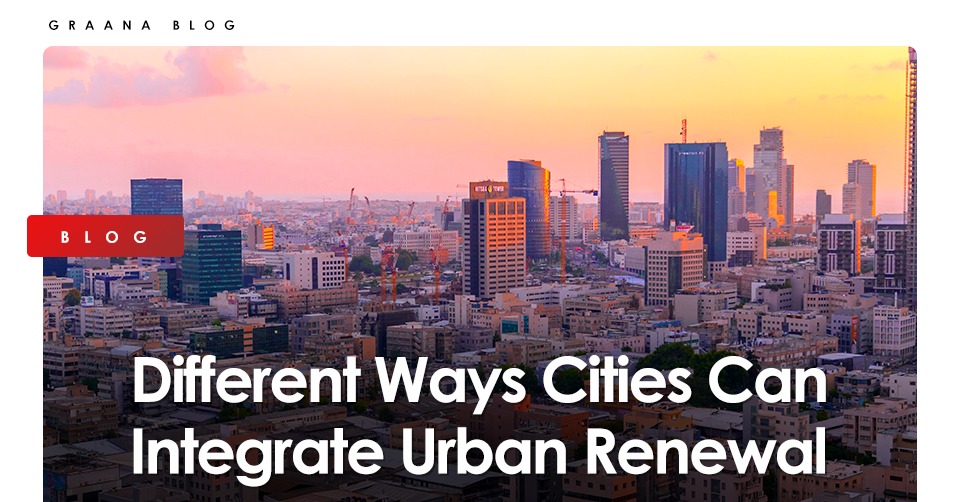

Urban renewal is an economic and development tool to renovate and resuscitate the aggravated conditions of impoverished or degenerated regions in an urban city. Such regions are marked with dilapidated infrastructure, stunted economy, lack of private investment, inadequate sanitation, unfit living conditions, deteriorating buildings/houses, contaminated water, and so on. Urban renewal breathes a new life in such unsustainable regions and stimulates private investment and sustainable solutions.
Urban renewal revolves around slum improvement, urban regeneration, and gentrification. It can include renovation, relocation, upgradation and demolition of existing structures. Public investment in road upgradation, street cleaning, and improving linkages stimulates the region’s economy as improved infrastructure attracts private investment.


Urban Renewal Process
There are two major ways through which urban renewal can be adapted – regeneration and gentrification.
Urban regeneration is the redevelopment of dilapidated areas marked with poor environmental conditions, high population density, congestion, and related urban problems. It includes improving physical infrastructure through demolition and construction, renovation, and exciting start-ups to reverse the economic downturn and pump up private investments. Most importantly, regeneration does not include relocation or resettlement under any condition. It is also known as a ‘retrofitting’ or ‘revitalisation’ program.
Urban renewals target congested areas, introduce new land uses, improve linkages to business centres of the city, increase municipal services and amenities, add an aesthetical value, and drive rental and property matters upward. The imminent surge in property values motivates private investors to invest in the region’s regeneration. As a result, congestion, crime rates, and intolerance decrease. A new life and revived community activism emerge to save the region from urban decay.
Urban gentrification is characterised by transforming a metropolitan area from a low-value region to a high value. If urban renewal is targeted to develop a dilapidated region in a high-value neighbourhood, it can be categorised as urban renewal. Other times, it can result from specific urban renewal programs that inflate the region’s property values.
The term is derived from “gentry”, which means people of a higher social status. In 1964, the term was reintroduced by a renowned sociologist, Ruth Glass, when she studied the influx of middle-class residents into the previously low-income areas of London that belonged to the working class. Urban gentrification is often carried out under the clause of eminent domain, whereby public authorities can compulsorily reclaim private land for civic purposes.
In totality, gentrification means different things for different sections of society. For the well-off people, it presents an opportunity to acquire safe land. For private businesses, it opens up new market streams to elevate their sales. For governments, it offers a well-sustained tax base. For the local people, it can be a cost if their incomes do not grow simultaneously with the rising prices in the region. If gentrification leads to displacement, it can be deemed a failure of urban planning as it fails to sustain the existing population. In other words, gentrification has a human cost involved, which can lead to displacement, urban sprawl, and mushrooming of slums if not taken into consideration. Hence, urban renewal should always be targeted to rebuild and resuscitate existing communities, not to resettle.
Grab the best options for Residential Properties for Rent:
ISLAMABAD: The Capital Development Authority (CDA) is looking to the federal government for an additional…
ISLAMABAD: The Capital Development Authority (CDA) and the Asian Development Bank (ADB) have entered into…
Islamabad: The Capital Development Authority (CDA) has announced plans to issue possession letters to allottees…
Islamabad, [24 March 2025] – Graana.com, Pakistan's leading online real estate marketplace, is proud to…
Islamabad, Pakistan – March 2025: Graana.com, Pakistan’s leading real estate platform, has proudly partnered with…
KARACHI: Sindh Local Government Minister Saeed Ghani chaired a meeting on Monday to review measures…